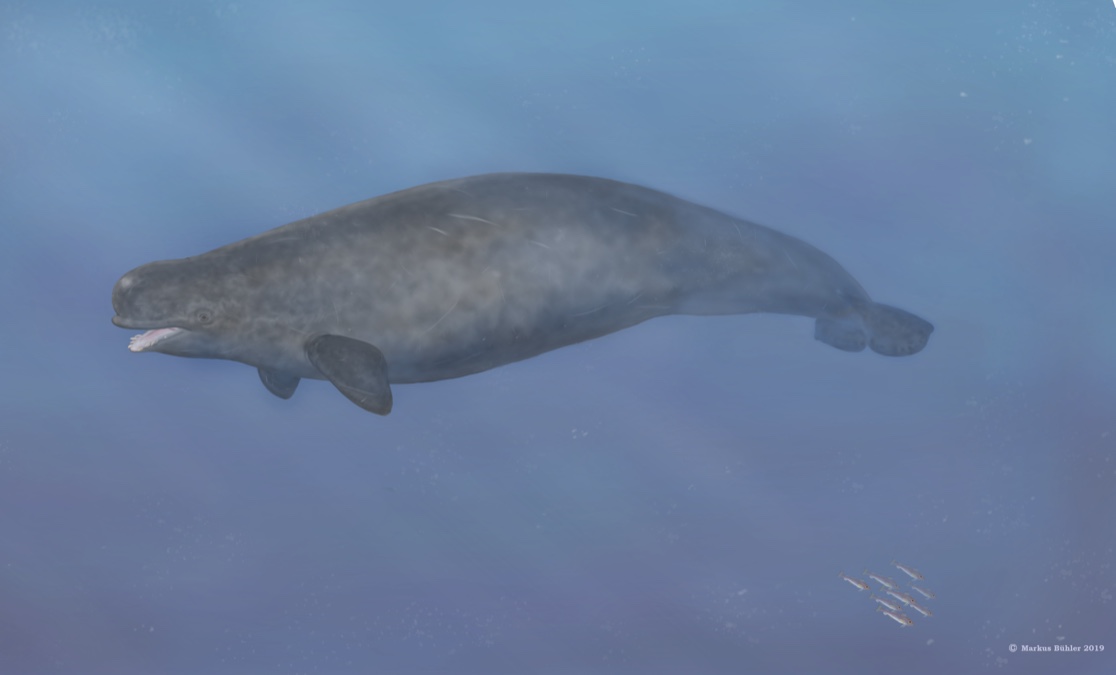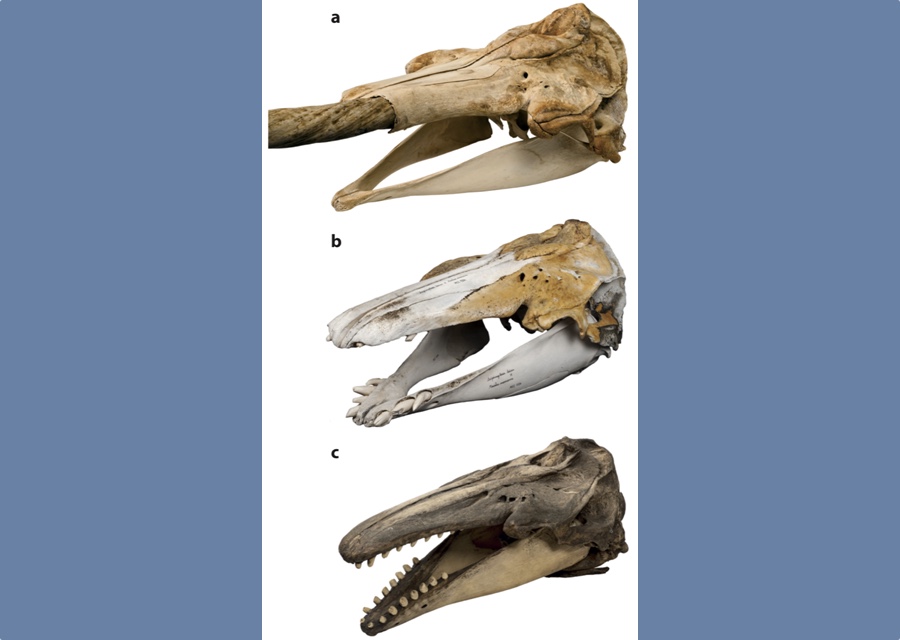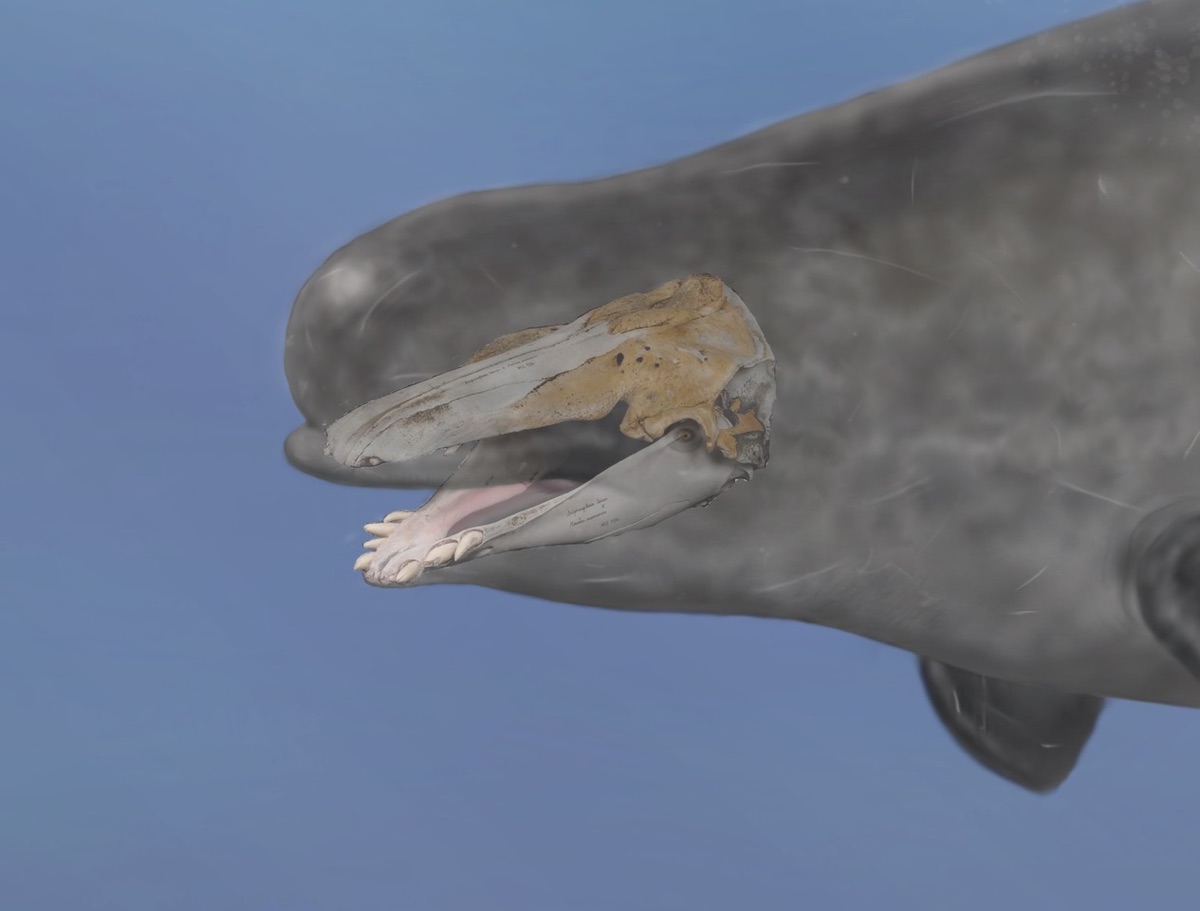First-Ever Beluga-Narwhal Hybrid Found in the Arctic

Thirty years ago, an Inuit man in west Greenland subsistence-hunting for whales shot a trio of strange cetaceans with front fins like belugas and tails like narwhals (the so-called "unicorns of the sea"). He was so flummoxed by the odd creatures that he saved one of the skulls, hanging it on the outside of his shed.
A few years later, a scientist visiting the area spotted the skull and ended up taking it to the Natural History Museum of Denmark. It was a strange specimen: larger than either a skull from a beluga or narwhal whale, but with teeth that looked somehow between the two. The hunter gave an interview through a translator, describing the animals' uniform gray bodies and odd teeth, visible even from his boat. Researchers thought the whale might have been the offspring of a beluga and a narwhal, but they couldn't prove it.
Now, they can. In a new paper published today (June 20) in the journal Scientific Reports, researchers confirmed that the skull does indeed belong to the only known specimen of a hybrid beluga-narwhal. [Real or Fake? 8 Bizarre Hybrid Animals]
"We just have this one specimen," said study leader Eline Lorenzen, the curator of mammals at the museum. "Nobody's heard about this before or since."
An in-between whale
The skull from the beluwhal (or should that be narluga?) is striking. It lacks the tusk (actually a tooth) of a typical male narwhal, and unlike narwhals, it has teeth on its lower jaw. Those teeth look reminiscent of beluga teeth, except that they protrude outward, like shovels. Beluga teeth grow in a neatly vertical pattern.

With only the anatomy to go on, it was impossible for researchers to prove that the skull really came from a hybrid, Lorenzen said. But she is an expert in retrieving old DNA from bone, so she and her colleagues decided to try a genetic approach to the question. They drilled into the creature's teeth and got a sample — a poor, degraded sample, Lorenzen told Live Science, but still enough to sequence. [The 12 Weirdest Animal Discoveries]
The results were clear: The animal was a male, and a near 50-50 genetic mix of beluga and narwhal. This indicated that it was a first-generation hybrid. To find out which species was which parent, the researchers looked at the animals' mitochondrial DNA. Mitochondrial DNA resides in the powerhouse of animal cells, and it's passed down only along the maternal line. The hybrid's mitochondrial DNA was all narwhal, revealing that this whale was the offspring of a narwhal mother and a beluga father.
Sign up for the Live Science daily newsletter now
Get the world’s most fascinating discoveries delivered straight to your inbox.
Next, the researchers extracted carbon and nitrogen from the skull's collagen. The scientists looked at molecular variations, called isotopes, of carbon and nitrogen, which are incorporated into the body from the animal's diet. The isotopes revealed a very different pattern than that seen in belugas, which hunt down to about 1,640 feet (500 meters) deep, or narwhals, which dive deeper than 2,625 feet (800 m).
"We can just say that this carbon signature is quite like that of walrus and bearded seals, both of which forage at the bottom of the sea," Lorenzen said.
The hybrid's odd teeth could have led it to employ different hunting strategies than its parents, Lorenzen said. It's impossible to tell, though, whether the hybrid would have been able to father offspring of its own. It was an adult when it died, but not much is known about the other two possible hybrids that accompanied this one when the hunter shot them.
One sank after being shot, according to the Inuit hunter. The other was brought in, but its skull was left near the shore and eventually washed away.

Hidden hybrids?
It's impossible to say whether the trio shot in the mid-1980s are the only hybrids out there, Lorenzen said. Hybridization is probably not very common, she said. No other whale researchers she reached out to had ever seen such a hybrid. And genetic data on narwhals and belugas suggests that the two species diverged 5 million years ago and haven't hybridized in any noticeable numbers for at least 1.25 million years.
Still, Lorenzen said, it would be an odd stroke of luck if the Danish museum is in possession of the only hybrid specimen out there.
"Maybe someone will hear about the study later in the week and we'll hear about more hybrids that we have no idea of," she said.
- In Photos: Tracking Humpback Whales in the South Pacific Ocean
- Images: Greenland's Gorgeous Glaciers
- Marine Marvels: Spectacular Photos of Sea Creatures
Originally published on Live Science.

Stephanie Pappas is a contributing writer for Live Science, covering topics ranging from geoscience to archaeology to the human brain and behavior. She was previously a senior writer for Live Science but is now a freelancer based in Denver, Colorado, and regularly contributes to Scientific American and The Monitor, the monthly magazine of the American Psychological Association. Stephanie received a bachelor's degree in psychology from the University of South Carolina and a graduate certificate in science communication from the University of California, Santa Cruz.










